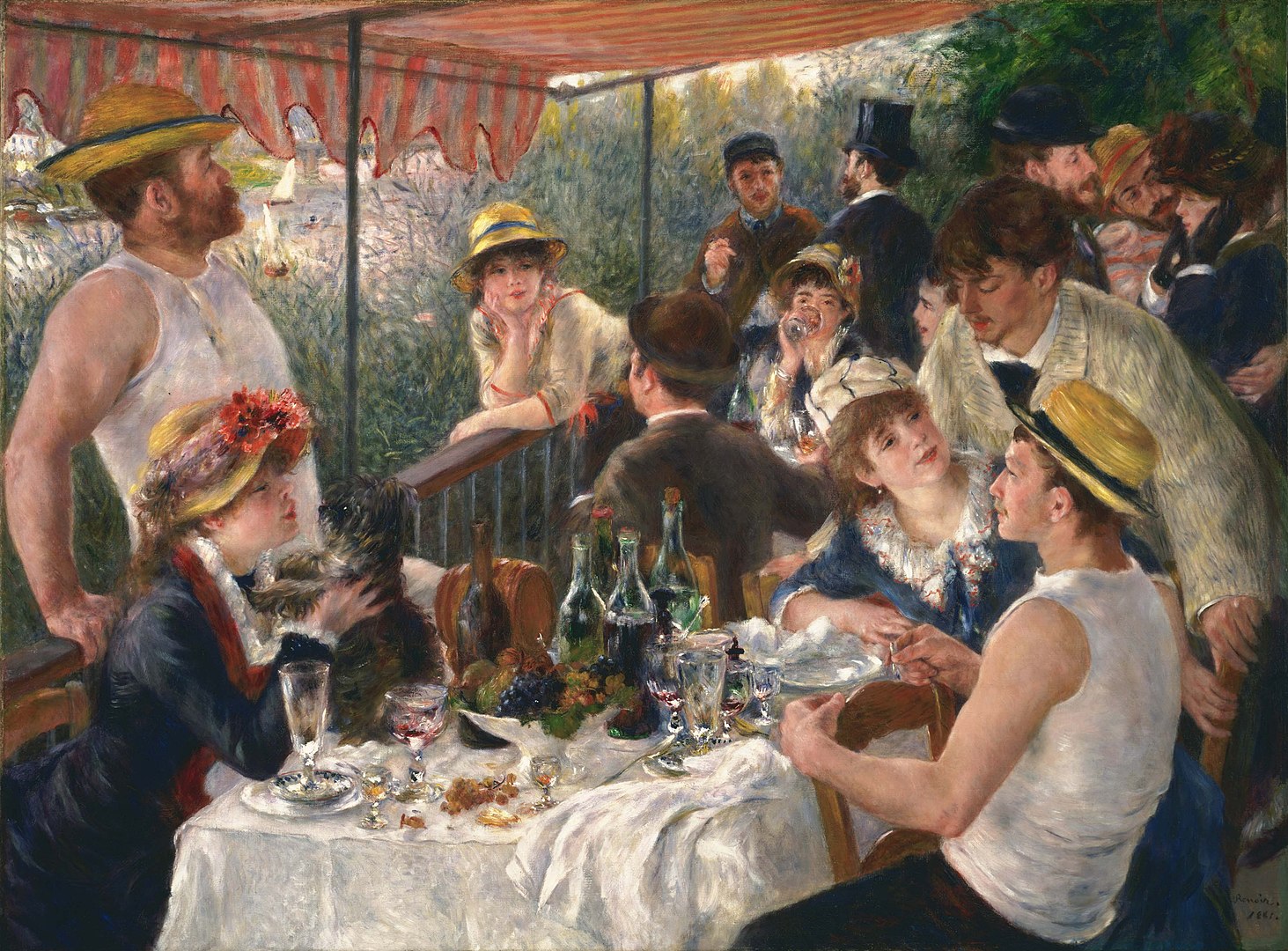In the contemporary oil painting genre, artists like to dabble in various styles inspired by styles of the past. One of these styles has been associated with landscape paintings that keep natural scenery as the subject of artwork and depict it through painting medium.
Landscape paintings, also known as landscape art, can express various scenic settings like mountains, forests, rivers, beaches, and whatnot. Artists use this painting style because it helps them study and explore aesthetic elements within nature itself – it guides them into imitating the scenic beauty on their canvas. Check out https://botto.com to learn more.
History has seen many artists who took the help of landscape paintings to practice their skills – Pierre Auguste Renoir was one of them. He was a legendary artist from the Impressionist movement who took his inspiration from Camille Pissaro. This article will enlighten you with a few of Renoir’s famous works.
Luncheon of The Boating Party
“Luncheon of The Boating Party” is an artwork that celebrates the joys of youth – it was painted by Pierre Auguste Renoir and used the artist’s close friends as models. Renoir shows these people, his close friends, enjoying a nice little lunch with wine on Maison Fournaise restaurant’s balcony in Chatou, Paris.
The painting gives off a very positive image of French society in the late nineteenth century; it shows how every single one of these people enjoyed each other’s company without worrying about their social classes or backgrounds. This painting’s composition is very stimulating, as Renoir perfects the imagery of the table with bottles of wine, fruits, glasses, and even a wrinkled tablecloth – it is an impressive example of a still life painting.
Two Sisters Aka on the Terrace
Painted in 1881 by Pierre Auguste Renoir, Two Sisters (On the Terrace) was one of the few paintings that the artist composed towards the pinnacle of his commercial success. This painting uses the same composition as used in ‘The Luncheon of the Boating Party’; it shows the Maison Fournaise restaurant’s balcony in Chatou, Paris. The only different aspect of this painting is the season – Two Sisters (On the Terrace) uses the season ‘spring’ in the canvas, combining the gorgeous hues of budding plants and the river’s beauty, which complements the colors of the two sisters greatly.
Renoir had an excellent understanding of light and color composition for his artworks, which is why he was able to do Two Sisters (On the Terrace) justice. This painting marks the end of Renoir’s Impressionist style, as he began exploring other avenues of art.
Dance at the Moulin De La Galette
Painted in 1876, Renoir’s Dance at the Moulin De La Galette is an excellent example of the greatest Impressionist artwork. The painting shows the festivities of a typical working-class Sunday afternoon. Renoir seems to have a vivid impression of the revelry at the Moulin de la Galette in Montmartre.
“Dance at the Moulin De La Galette” is a slice-of-life scene, which gives a very warm feeling in the viewer’s heart. Again, many of the figures in this painting’s foreground are Renoir’s close friends, working rivals, and lovers! Renoir made sure that the painting showed people till the very end of its background, and he used dark tonalities of green to depict the men’s clothing with only a few women wearing light colors – just for the contrast.
The Rose Garden at Wargemont
Pierre Auguste Renoir painted this artwork in 1879, and it immediately became an embodiment of perfect landscape painting. Renoir had carefully studied plant growth’s natural peculiarities and expressed his observation in a series of colors. The Rose Garden at Wargemont is artwork from Renoir’s Impressionist block with confident brushstrokes, ample palette for paint, and the experiential depiction of light rays.
Renoir had gained much of his popularity through the radical yet ironically traditional style of his paintwork; this painting shows his style’s remarkable expression. The deep saturation in these hues, along with the shades of light, greatly complement the natural background of this landscape.
La Grenouillere
La Grenouillere, painted in the Summer of 1869, is a depiction of the famous boating and bathing spot near Bougival, towards the west of Paris. This spot was quick to become a go-to place for many Impressionists, and Claude Oscar Monet would often accompany Renoir to this area. Renoir preferred to paint en plein air, which refers to painting outside to capture the accurate optical effects of sunlight on his subjects.
This was also very highly influenced by the Japanese culture, and so were Renoir’s paintings. The artwork very simply demonstrates a typical sunny summer afternoon, focusing on the water of the river. La Grenouillere is a tribute to the Parisian lifestyle, which many have often seen in Renoir’s paintings.
Conclusion
Newly invented tools made way for artists to experience new styles of artwork at https://www.1st-art-gallery.com/Pierre-Auguste-Renoir/Pierre-Auguste-Renoir-oil-paintings.html. Many famous artists like Claude Monet, Camille Pissarro, and Pierre Auguste Renoir moved away from Romanticism. Impressionism was their next arena. Painted en plein air, landscape paintings brought life in a canvas through merely the artist’s techniques – Renoir might remain as one of the few who did justice to this style.
